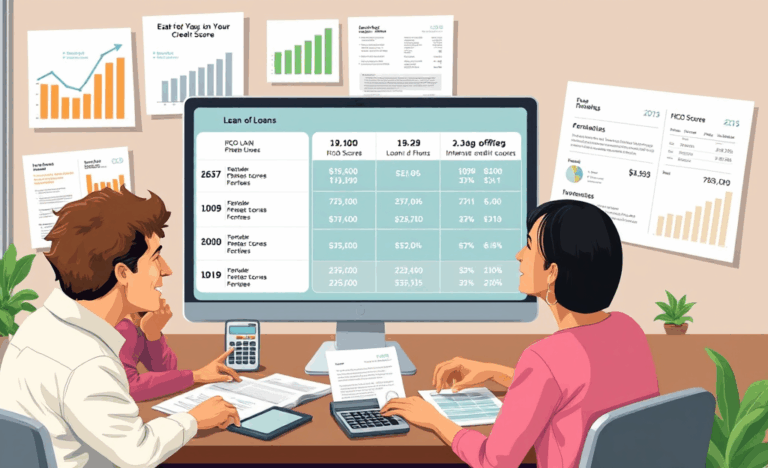![]()
![]()
![]()
![]()
Unlock Affordable Low-Interest Mortgage Loans Today
Low-Interest Mortgage loans present an appealing option for home buyers seeking to make their property dreams a reality without breaking the bank.
In this article, we will delve into the numerous benefits of low-interest mortgage loans, compare market rates, explore the various factors influencing these rates, analyze current trends for 30-year fixed mortgages, and provide helpful tips for securing the best mortgage deal.
Understanding the intricacies of low-interest rates can empower borrowers to make informed decisions, ensuring they optimize their financing options for a successful home purchase.
What a Favorable-Rate Home Loan Is
A below-market rate mortgage, commonly referred to as a low-interest mortgage loan, is a home financing option designed to offer borrowers significantly reduced interest rates compared to standard mortgage products.
This type of loan plays a vital role in personal finance because it directly affects the overall cost of borrowing.
By securing a lower rate, individuals can enjoy smaller monthly payments, which leads to easier budgeting and greater financial freedom.
Over time, this translates into substantial interest savings, allowing homeowners to use their income more strategically, whether it’s investing, saving for retirement, or paying off other debts.
Additionally, these loans can increase purchasing power, enabling borrowers to afford more desirable properties without drastically raising monthly expenses.
Lenders typically offer lower rates based on creditworthiness, loan type, and term length, making it essential for applicants to meet strict financial criteria in order to qualify.
- Fixed rate option
- Variable rate option
- Potential long-term savings
For a comprehensive breakdown on how mortgage rates impact your loan and overall housing affordability, visit Heritage Family Credit Union’s guide on mortgage rates
Saving Potential for Borrowers
Borrowers gain significant financial advantages by choosing low-interest mortgage loans, especially when comparing total costs over the life of the loan.
One of the most noticeable benefits is the lower monthly obligation, allowing homeowners to free up income for other expenses or savings.
For example, according to data from the Consumer Financial Protection Bureau, dropping rates from 7.25% to 6.5% on a $400,000 mortgage can lead to about $200 in monthly savings.
This seemingly small difference accumulates significantly over timeIn addition to easing monthly costs, low-interest loans yield a reduction in total interest paid across decades.
A borrower locking in a 30-year fixed mortgage at 6.125% instead of 6.875% will save tens of thousands of dollars in lifetime interest.
These savings increase the appeal of refinancing or purchasing during favorable rate periods, as emphasized by this guide focused on leveraging low mortgage rates
- Lower monthly payments
- Reduced total interest
- Improved affordability
Snapshot of Current Offers
Comparing low-interest mortgage rates is crucial because a small difference in rates can significantly affect your monthly payments and long-term financial commitment.
By evaluating multiple lenders, borrowers can discover substantial savings on interest and fees.
With real-time data easily accessible, such as through tools like NerdWallet’s Mortgage Rate Tool, you can find offers tailored to your financial situation much faster.
| Lender | Rate | Term | Fees |
|---|---|---|---|
| Wells Fargo | 6.125% | 30 yrs | $1,500 |
| Chase Bank | 6.250% | 30 yrs | $1,200 |
| Bank of America | 6.375% | 30 yrs | $995 |
| Credit Karma Offers | 6.810% | 30 yrs | $1,100 |
| Freddie Mac Average | 6.830% | 30 yrs | $0 |
Rates and fees can vary based on credit profile, loan amount, and location, so it’s essential to compare personalized offers using trusted platforms before making any commitment
Elements That Move Rates
The availability and level of low-interest mortgage loans rely heavily on a blend of personal financial factors and broader economic dynamics.
One of the most decisive personal elements is the credit score.
Borrowers with higher credit scores generally qualify for more favorable rates because they represent a lower risk to lenders.
This is why maintaining a solid payment history, reducing revolving debt, and limiting hard credit inquiries can significantly improve a borrower’s standing.
Along with credit score, the size of the down payment also affects the rate offered.
A loan supported by a substantial down payment poses less risk, often resulting in a better rate.
At the same time, macroeconomic conditions play a vital role in shaping rate availability.
According to Investopedia’s guide on mortgage rate factors, economic slowdowns often lead to falling interest rates.
This happens because reduced employment and consumer spending pressure lenders to attract borrowers with more competitive terms.
Additionally, monetary policy set by the Federal Reserve, inflation expectations, and bond market trends directly influence mortgage rate levels.
For up-to-date insights, Fannie Mae’s page on 30-year mortgage rate trends reveals how investor expectations drive rate shifts.
These layered influences, both personal and external, work in tandem to define a borrower’s access to low-interest mortgage opportunities.
Strategies to Secure a Better Deal
To secure the lowest interest mortgage rates available, borrowers should begin by shopping around.
Comparing offers from a wide variety of lenders, including banks, credit unions, and online institutions, is essential to uncover the most favorable terms.
Even a fraction of a percentage point difference can result in substantial savings over the life of a loan.
Borrowers can learn more about this through Chase Bank’s guidance on reducing mortgage rates.
Alongside this step, improving credit score is a critical move.
A higher credit score typically qualifies borrowers for lower interest rates, so it’s worthwhile to pay down existing debt, avoid new credit inquiries, and address any inaccuracies on credit reports.
As market conditions fluctuate rapidly, borrowers should also consider locking a rate when they find a favorable one.
This locks in the agreed-upon rate for a specific period of time, shielding the borrower from potential rate hikes before closing.
Additionally, making a larger down payment can strengthen a borrower’s profile, as lenders often reward this with lower rates.
By proactively enhancing financial health and leveraging informed decisions, borrowers gain a powerful advantage.
Each of these actions guides them closer to the goal of a truly low-interest mortgage loan that supports long-term homeownership.
Low-Interest Mortgage loans offer significant advantages, especially for first-time buyers and those looking to refinance.
By staying informed about current trends and comparing rates, borrowers can position themselves for the best financial outcomes in their home financing journey.





